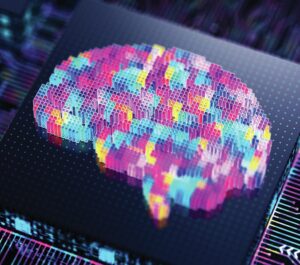AI Enhances Celiac Disease Diagnosis

AI Enhances Celiac Disease Diagnosis
Celiac disease is an autoimmune disorder affecting a significant portion of the population. Traditionally, diagnosing this condition has been a complex and lengthy process. Recent advancements in artificial intelligence (AI) technology are now changing the landscape of diagnosis, making it quicker and more accurate.
Understanding Celiac Disease
Celiac disease is a severe immune reaction to gluten, a protein found in wheat, barley, and rye. When individuals with celiac disease consume gluten, their immune system mistakenly attacks the lining of the small intestine. This reaction can lead to various health issues, from digestive problems to more severe illnesses, including nutritional deficiencies and osteoporosis.
Traditional Diagnosis Procedures
Historically, diagnosing celiac disease involves multiple steps:
- Symptom Assessment: Doctors usually begin by assessing the patient’s symptoms, which may include abdominal pain, bloating, diarrhea, and fatigue.
- Blood Tests: A series of blood tests are then conducted to check for specific antibodies commonly elevated in patients with celiac disease.
- Biopsy: If blood tests indicate the possibility of celiac disease, a biopsy of the small intestine may be performed to examine the extent of damage.
- Gluten-Free Diet: In some cases, doctors may recommend a gluten-free diet to see if symptoms improve, although this may complicate subsequent testing.
While these traditional methods are effective, they can be time-consuming, leaving patients in uncertainty.
The Role of AI in Diagnosis
AI technology is revolutionizing the medical field, and its application in diagnosing celiac disease holds great promise. Through sophisticated algorithms, AI can analyze vast amounts of medical data more quickly than a human can. Here are a few ways AI is contributing:
Data Analysis
- Pattern Recognition: AI systems can identify patterns in symptoms and test results that might be overlooked by human practitioners. This capability allows for faster identification of potential celiac disease cases.
- Predictive Modeling: By examining large databases of patient histories and outcomes, AI can predict the likelihood of a celiac diagnosis based on specific input factors.
Enhanced Accuracy
- Reduced Errors: By minimizing human error in data interpretation and diagnosis, AI increases the accuracy of results. This is particularly vital in distinguishing celiac from non-celiac gluten sensitivity.
- Comprehensive Evaluation: AI can evaluate a combination of blood tests and biopsies, providing a holistic view of the patient’s condition.
Benefits of AI Integration
Integrating AI into the diagnostic process for celiac disease offers several advantages:
- Speed: With AI’s rapid analysis capabilities, patients can receive a diagnosis much faster, which is crucial for starting treatment.
- Cost-Efficiency: Reducing the number of tests and procedures required can lower healthcare costs for both patients and practitioners.
- Early Intervention: Faster diagnosis means that patients can begin necessary dietary changes sooner, potentially avoiding complications associated with untreated celiac disease.
Challenges and Considerations
Despite its potential, the implementation of AI in celiac disease diagnosis is not without challenges:
- Data Privacy: Ensuring that patient data is handled securely is paramount as AI systems rely on accessing sensitive medical information.
- Acceptance by Healthcare Providers: Some practitioners may be hesitant to adopt AI-driven methods, preferring traditional diagnostic approaches they are more familiar with.
- Regulatory Oversight: As with any technology in healthcare, adequate regulations and standards must be established to ensure patient safety and accuracy.
In summary, the introduction of AI technology into the diagnosis of celiac disease signifies a promising leap forward in medical practice. This development could lead to quicker and more accurate results, benefiting patients and healthcare providers alike. As the technology continues to evolve, it is essential for both industries to work together to harness its full potential while addressing any arising challenges.




